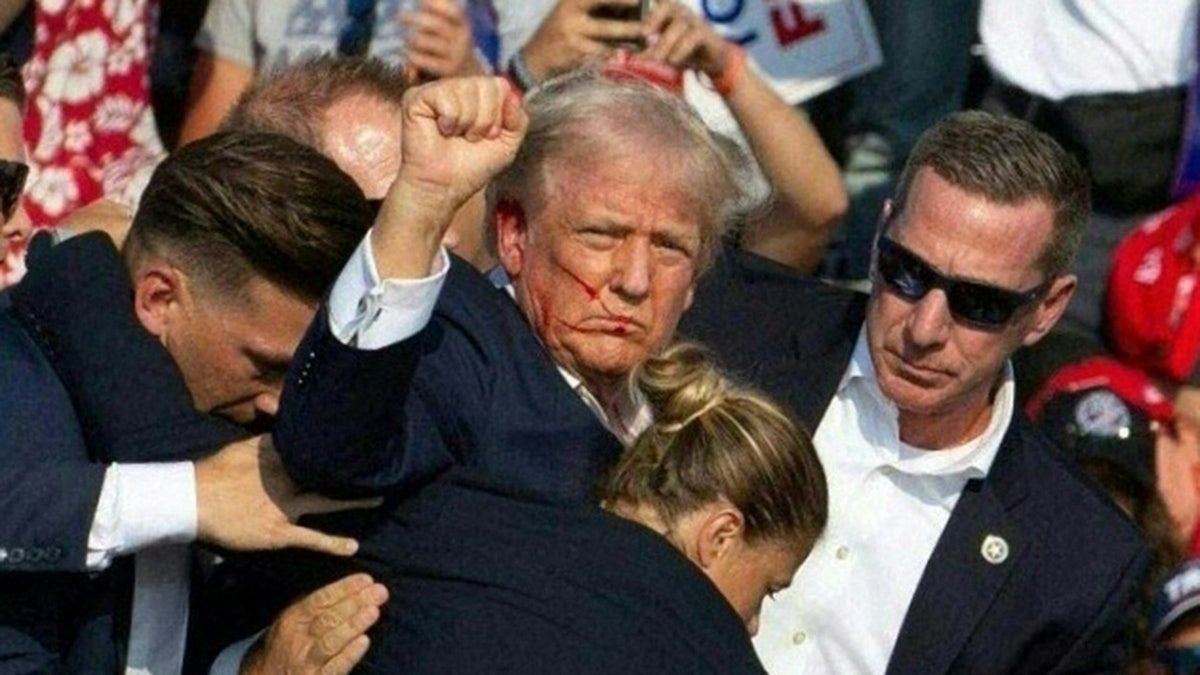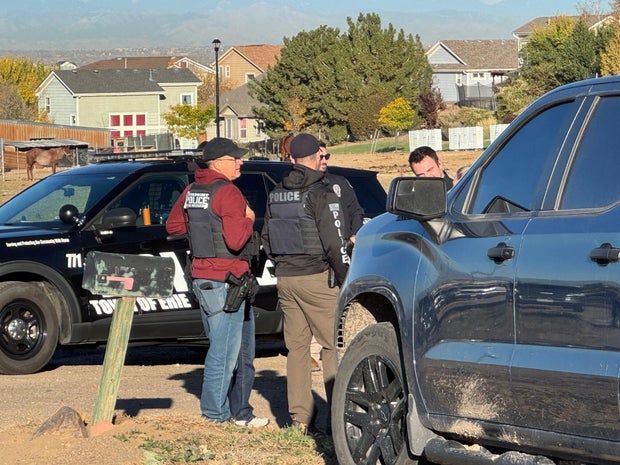Report on the Philadelphia Organized Crime Conflict (1994-2000) and its Implications for Sustainable Development Goals
Introduction: Conflict Analysis in the Context of Global Development
An examination of the Philadelphia mob war, occurring between 1994 and 2000, offers a critical case study on the detrimental impact of organized crime on societal stability and progress towards the United Nations Sustainable Development Goals (SDGs). The conflict, involving factions led by John Stanfa and Joseph Merlino, centered on control over illicit economies, thereby undermining legal frameworks and community safety. This report analyzes the conflict’s intersection with key SDGs, highlighting the role of law enforcement in restoring order and strengthening institutions, as documented in extensive electronic surveillance and a forthcoming Netflix series, “Mob War: Philadelphia vs. The Mafia.”
Undermining SDG 16: Peace, Justice, and Strong Institutions
The protracted violence and illicit activities of the Philadelphia mob war represent a direct assault on the principles of SDG 16, which aims to promote peaceful and inclusive societies, provide access to justice for all, and build effective, accountable institutions.
Breakdown of Peace and Security
- The conflict was characterized by murder, mayhem, and treachery, fundamentally disrupting public peace and safety.
- Recorded conversations revealed plots for targeted killings, demonstrating a complete disregard for human life and the rule of law, directly contravening SDG Target 16.1 (Significantly reduce all forms of violence and related death rates everywhere).
- The statement, “Goodfellas kill goodfellas,” recorded during the investigation, encapsulates the violent norms that supplanted formal justice systems within this subculture.
Strengthening Justice through Institutional Action
The Federal Bureau of Investigation’s (FBI) response illustrates a concerted effort to reinforce the integrity of justice systems. The use of advanced electronic surveillance was pivotal in dismantling the criminal enterprise and holding perpetrators accountable.
- Court-authorized listening devices were strategically placed, including in the law offices of Salvatore Avena, which were being used to plan criminal activities under the guise of attorney-client privilege.
- Over 2,000 conversations were recorded, providing irrefutable evidence that was crucial for successful prosecutions.
- The convictions of John Stanfa, who received a life sentence, and Joseph Merlino’s associates for racketeering were significant victories for the justice system, reinforcing SDG Target 16.3 (Promote the rule of law at the national and international levels and ensure equal access to justice for all).
Impact on Economic and Urban Sustainability: A Challenge to SDG 8 and SDG 11
The mob’s operations created a shadow economy that stifled legitimate growth and fostered an environment of fear, directly impeding progress on SDG 8 (Decent Work and Economic Growth) and SDG 11 (Sustainable Cities and Communities).
Illicit Economies vs. Decent Work
- Control of illegal operations, including gambling, loan-sharking, drug-dealing, and extortion, diverted financial resources from the legitimate economy.
- These activities undermine formal employment, fair competition, and sustainable economic development as outlined in SDG 8.
- The dispute over a trash-hauling business, which escalated into threats of violence, shows how organized crime infiltrates and corrupts legitimate industries.
Community Safety and Urban Development
The violence, described as “blood in the streets,” rendered communities unsafe and insecure, directly challenging the objective of SDG Target 11.1 (Ensure access for all to adequate, safe and affordable housing and basic services and upgrade slums).
- A surveillance video captured a mob hit at a deli, illustrating the indiscriminate danger posed to civilians and public spaces.
- The climate of fear and violence degrades the quality of urban life and inhibits the creation of inclusive, safe, and resilient communities.
- By dismantling these criminal networks, law enforcement actions contributed to restoring a sense of security essential for sustainable urban living.
SDGs Addressed in the Article
SDG 16: Peace, Justice and Strong Institutions
- The article directly relates to SDG 16 as it focuses on organized crime, violence, and the efforts of justice institutions to restore peace and uphold the rule of law. The narrative revolves around a “bloody mob war” characterized by “murder and mayhem,” and the subsequent response from law enforcement (the FBI) and the judicial system. The core themes of combating crime, reducing violence, and ensuring justice through effective institutions are central to both the article and SDG 16.
Specific SDG Targets Identified
-
Target 16.1: Significantly reduce all forms of violence and related death rates everywhere.
- The article highlights a direct violation of this target by describing the mob war in Philadelphia. Phrases like “murder and mayhem,” “plotting murder and mayhem,” and “bodies piled up and blood ran in the streets” explicitly detail the violence and death that the SDG target aims to reduce. The law enforcement actions described are a direct attempt to meet this target by stopping the violence.
-
Target 16.3: Promote the rule of law at the national and international levels and ensure equal access to justice for all.
- This target is addressed through the detailed account of the legal process used to combat the mob. The article describes how indictments were handed down, evidence was introduced at trials, and mobsters were convicted and sentenced to prison (e.g., “Stanfa is currently serving life in prison”). This demonstrates the application of the rule of law to hold criminals accountable. The mob’s own code, “Goodfellas don’t sue goodfellas… Goodfellas kill goodfellas,” stands in stark contrast to the principles of justice and rule of law promoted by this target.
-
Target 16.4: By 2030, significantly reduce illicit financial and arms flows, strengthen the recovery and return of stolen assets and combat all forms of organized crime.
- The article explicitly identifies the core activities of the criminal enterprise, stating the war was over “control of all illegal operations in the underworld – gambling, loan-sharking, drug-dealing and extortion.” These activities represent illicit financial flows. The entire law enforcement operation, from surveillance to prosecution, is a case study in combating organized crime, directly aligning with the objective of this target.
-
Target 16.a: Strengthen relevant national institutions… to build capacity at all levels for… combating… crime.
- The article showcases the strength and capacity of a key national institution, the FBI. It details the FBI’s successful use of sophisticated “electronic surveillance” as a “major tool” in its “highly successful war against the Mafia.” The ability to get court authorization, plant listening devices, record over 2,000 conversations, and use this evidence to “judicially eviscerate” the crime family is a clear demonstration of a strong and effective institution with the capacity to combat complex criminal organizations.
Indicators for Measuring Progress
-
Indicators for Target 16.1 (Reduce Violence)
- Number of violent deaths and incidents related to organized crime: The article implies this indicator by repeatedly mentioning “murder,” a “mob hit picked up on a hidden camera,” and “bodies piled up.” A reduction in such events would be a direct measure of progress.
-
Indicators for Target 16.3 (Promote Rule of Law)
- Rate of successful prosecutions and convictions for organized crime: The article provides concrete data for this indicator. It states that mob boss John Stanfa was convicted and is “serving life in prison,” and that his rival Joey Merlino and his associates were also “convicted of racketeering and jailed.” These outcomes serve as a measure of the justice system’s effectiveness.
-
Indicators for Target 16.4 (Combat Organized Crime)
- Number of organized crime groups dismantled: The article implies this qualitative indicator by stating that the federal efforts “judicially eviscerated the Philadelphia crime family.” This language suggests the complete dismantling of the criminal structure, a key measure of success in combating organized crime.
-
Indicators for Target 16.a (Strengthen Institutions)
- Effectiveness and use of advanced investigative techniques by law enforcement: The article heavily implies this indicator by focusing on the successful use of electronic surveillance. The fact that “More than 2,000 conversations were recorded” and that a defense attorney admitted, “you can’t cross-examine a tape,” points to the high capacity and effectiveness of the investigative methods used by the FBI, indicating institutional strength.
Summary Table of SDGs, Targets, and Indicators
| SDGs | Targets | Indicators |
|---|---|---|
| SDG 16: Peace, Justice and Strong Institutions | 16.1: Significantly reduce all forms of violence and related death rates everywhere. | Number of violent deaths and incidents related to organized crime (implied by mentions of “murder,” “mob hit,” and “bodies piled up”). |
| SDG 16: Peace, Justice and Strong Institutions | 16.3: Promote the rule of law… and ensure equal access to justice for all. | Rate of successful prosecutions and convictions for organized crime (mentioned through the life sentences and jail terms for mob leaders). |
| SDG 16: Peace, Justice and Strong Institutions | 16.4: …combat all forms of organized crime. | Number of organized crime groups dismantled (implied by the statement that the crime family was “judicially eviscerated”). |
| SDG 16: Peace, Justice and Strong Institutions | 16.a: Strengthen relevant national institutions… for… combating… crime. | Effectiveness and use of advanced investigative techniques by law enforcement (demonstrated by the successful use of electronic surveillance to record over 2,000 conversations). |
Source: theconversation.com






